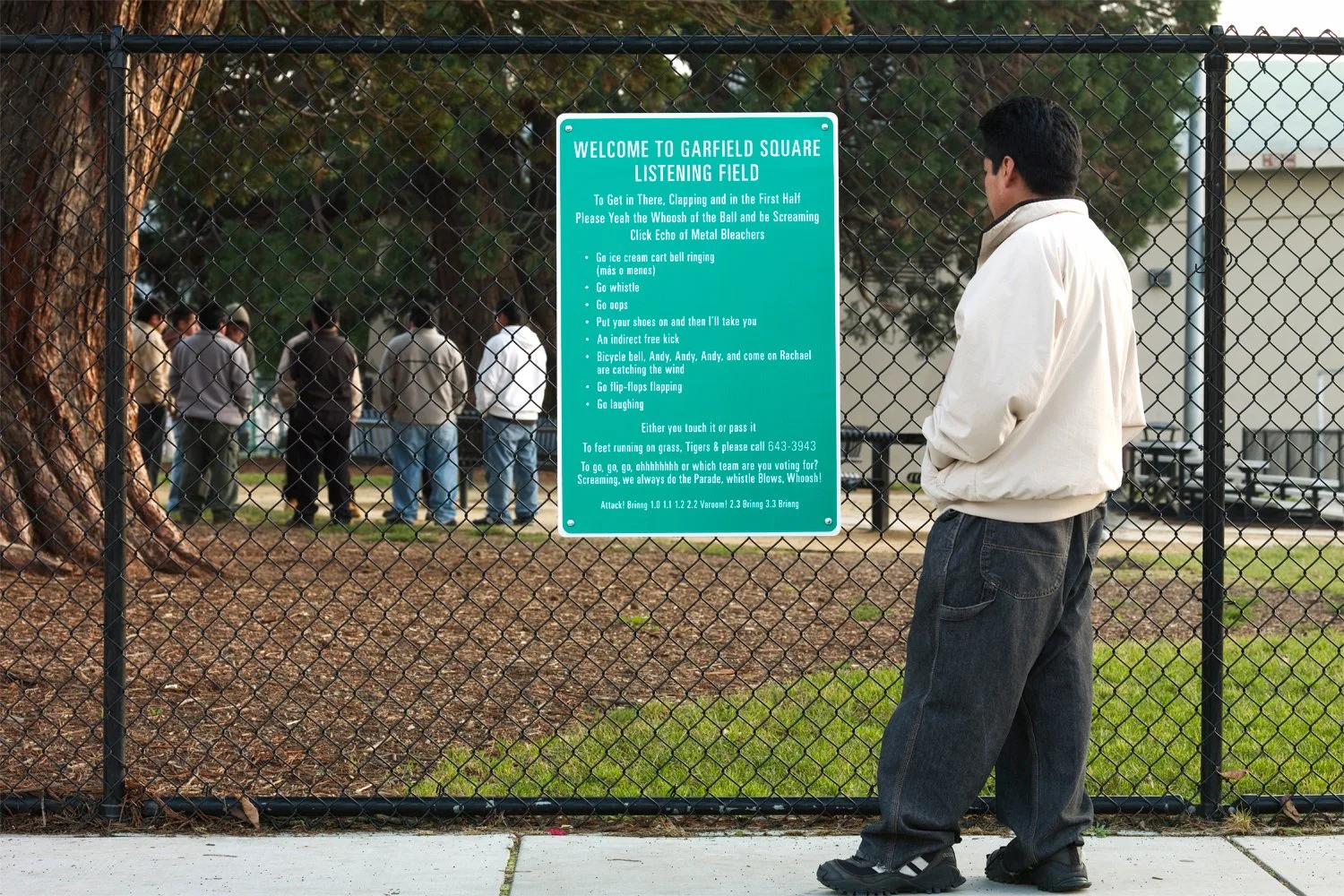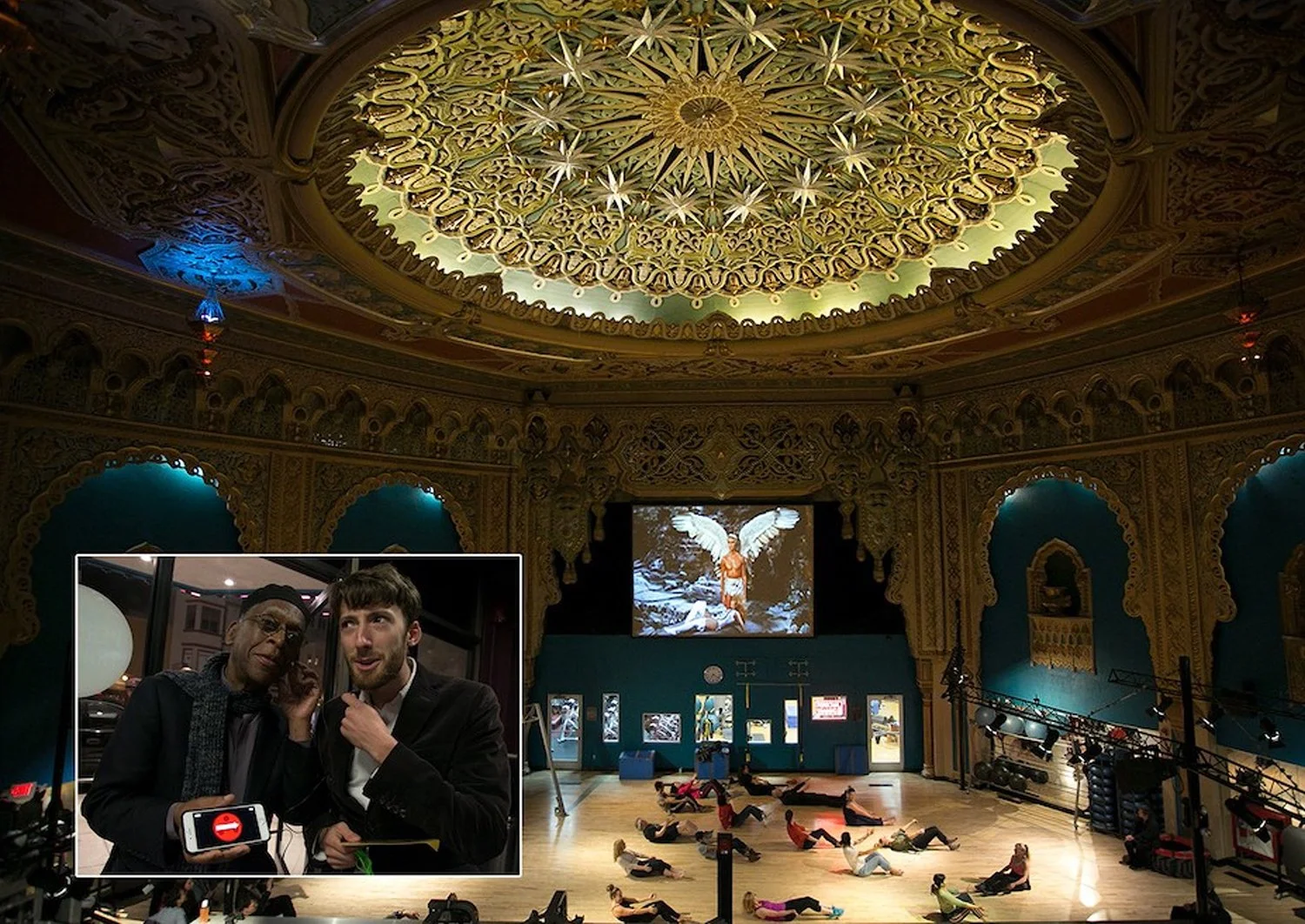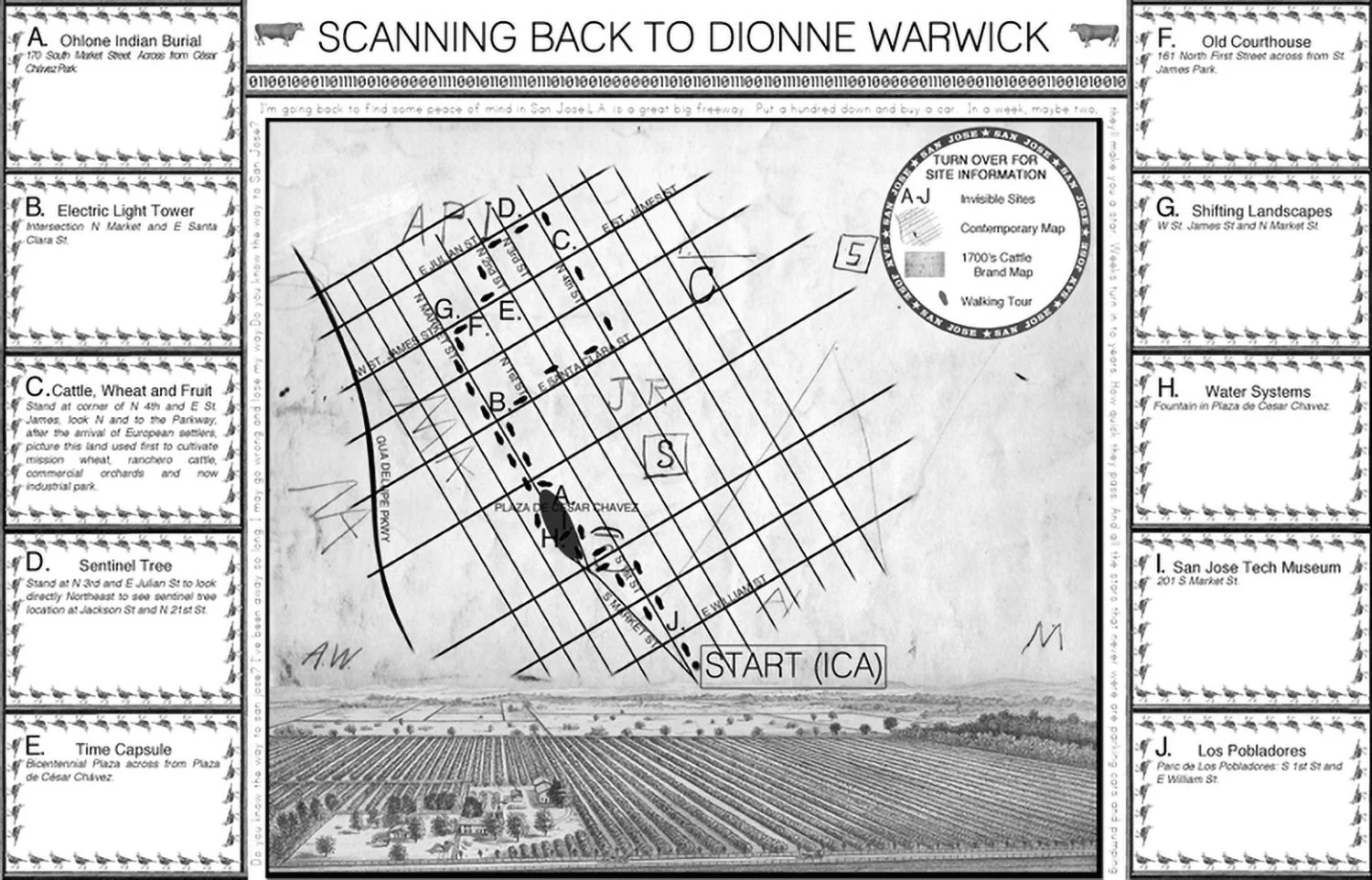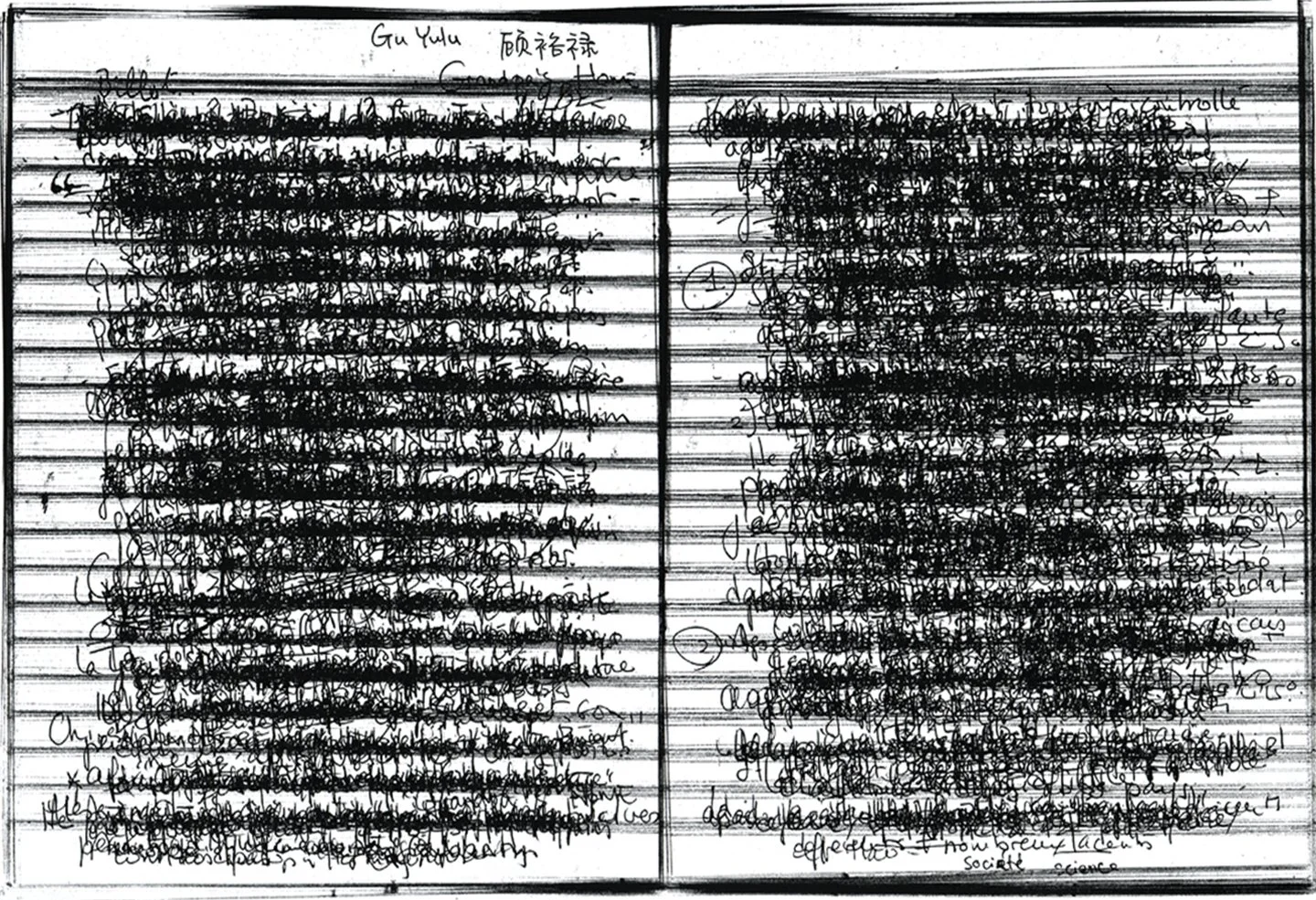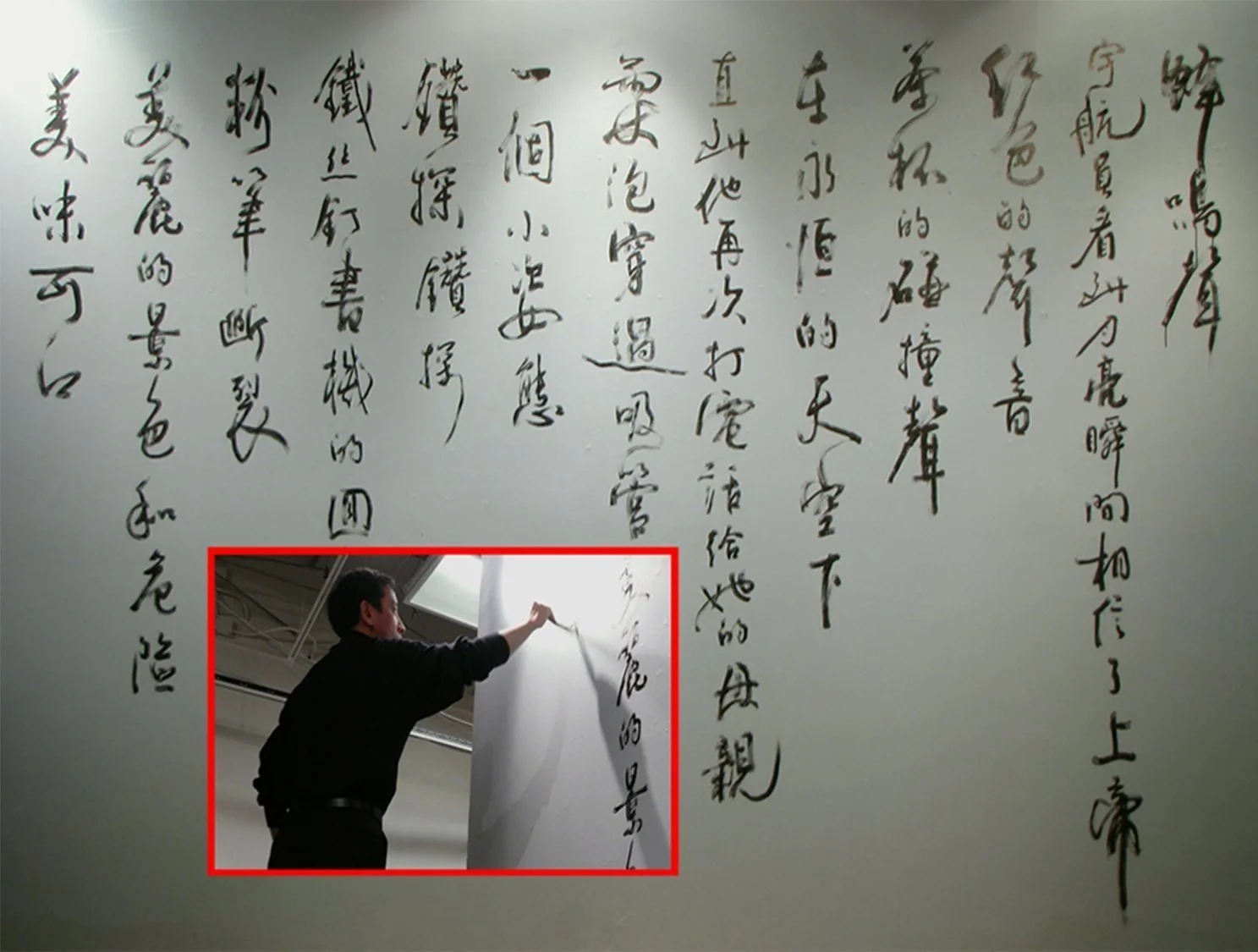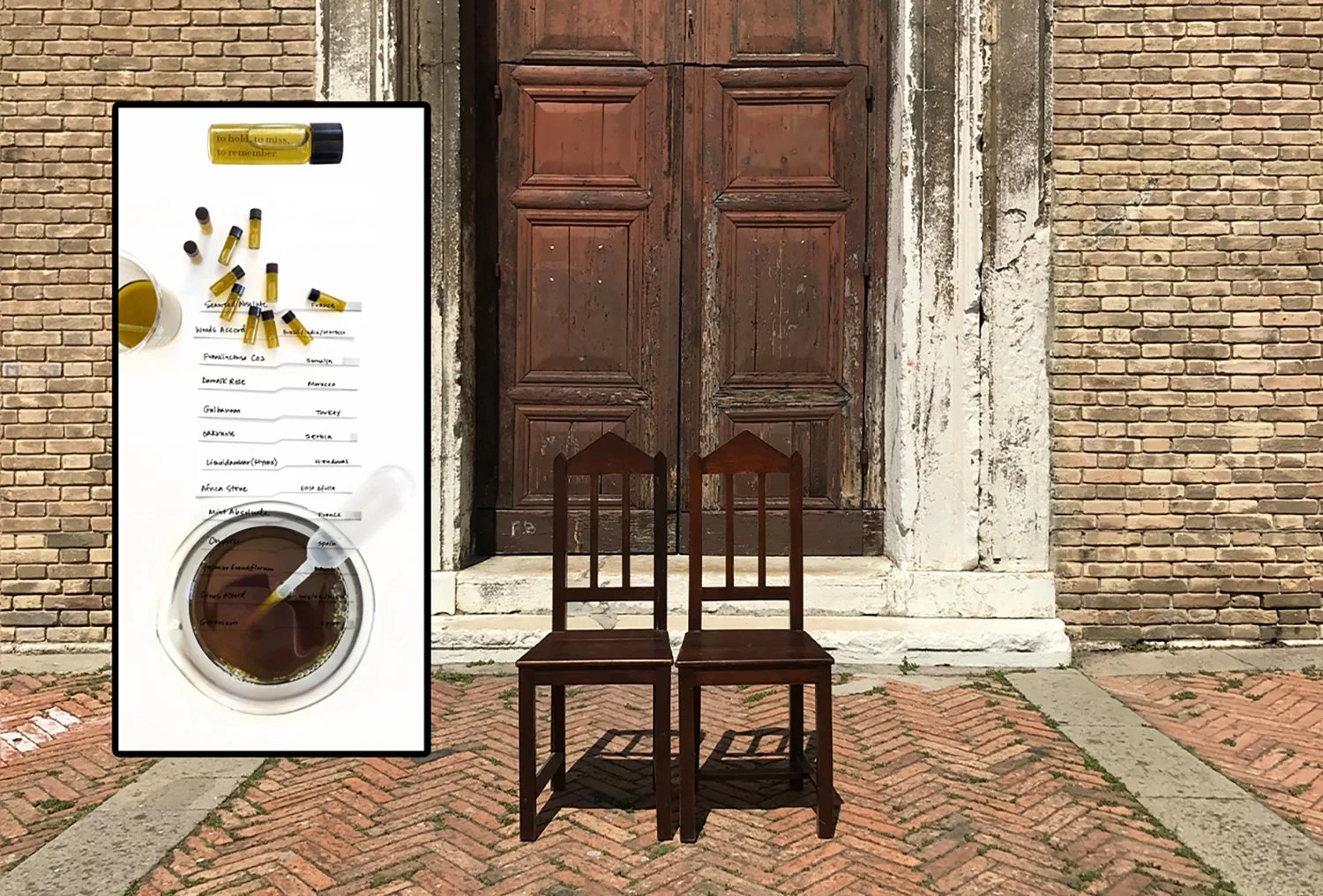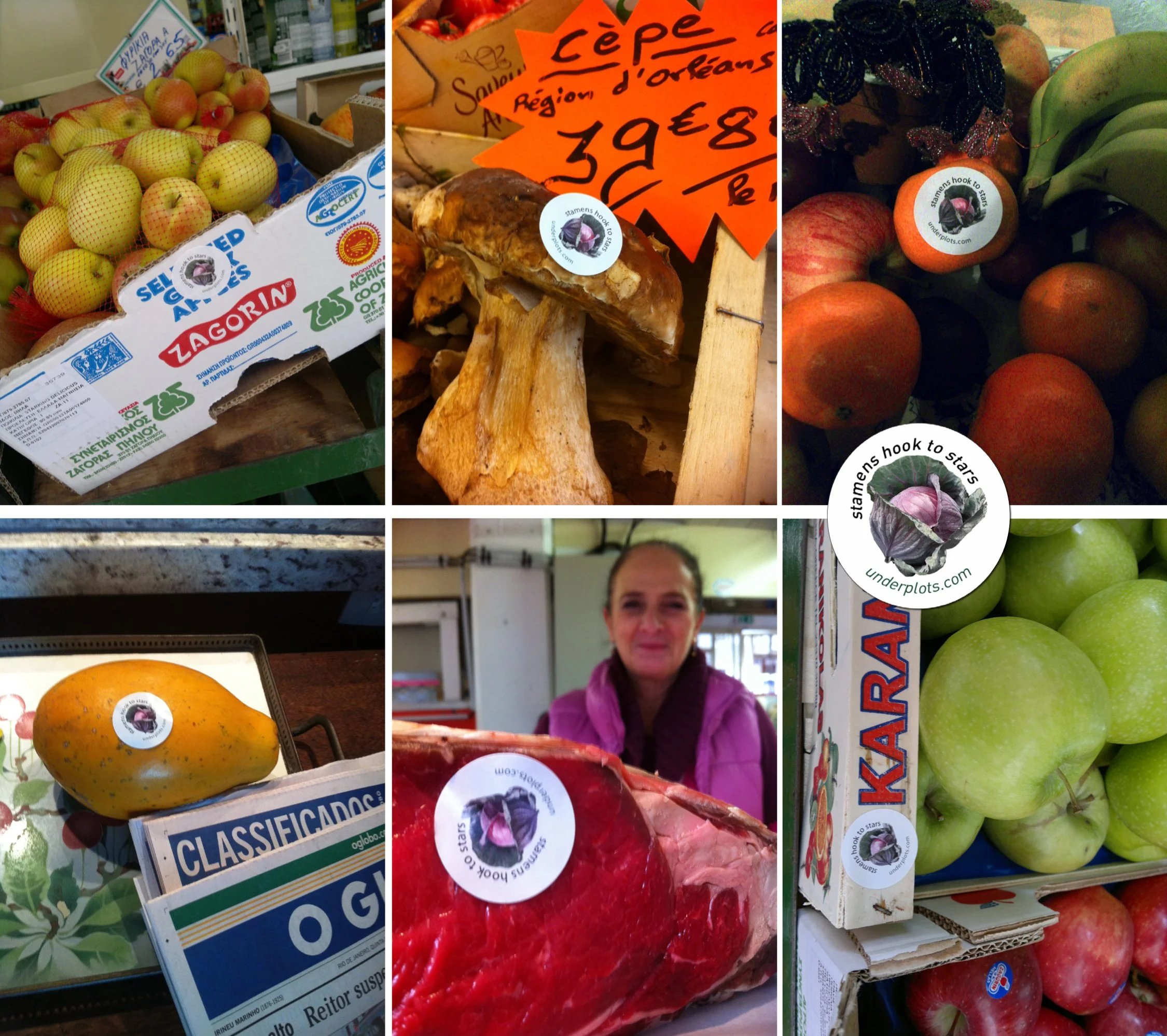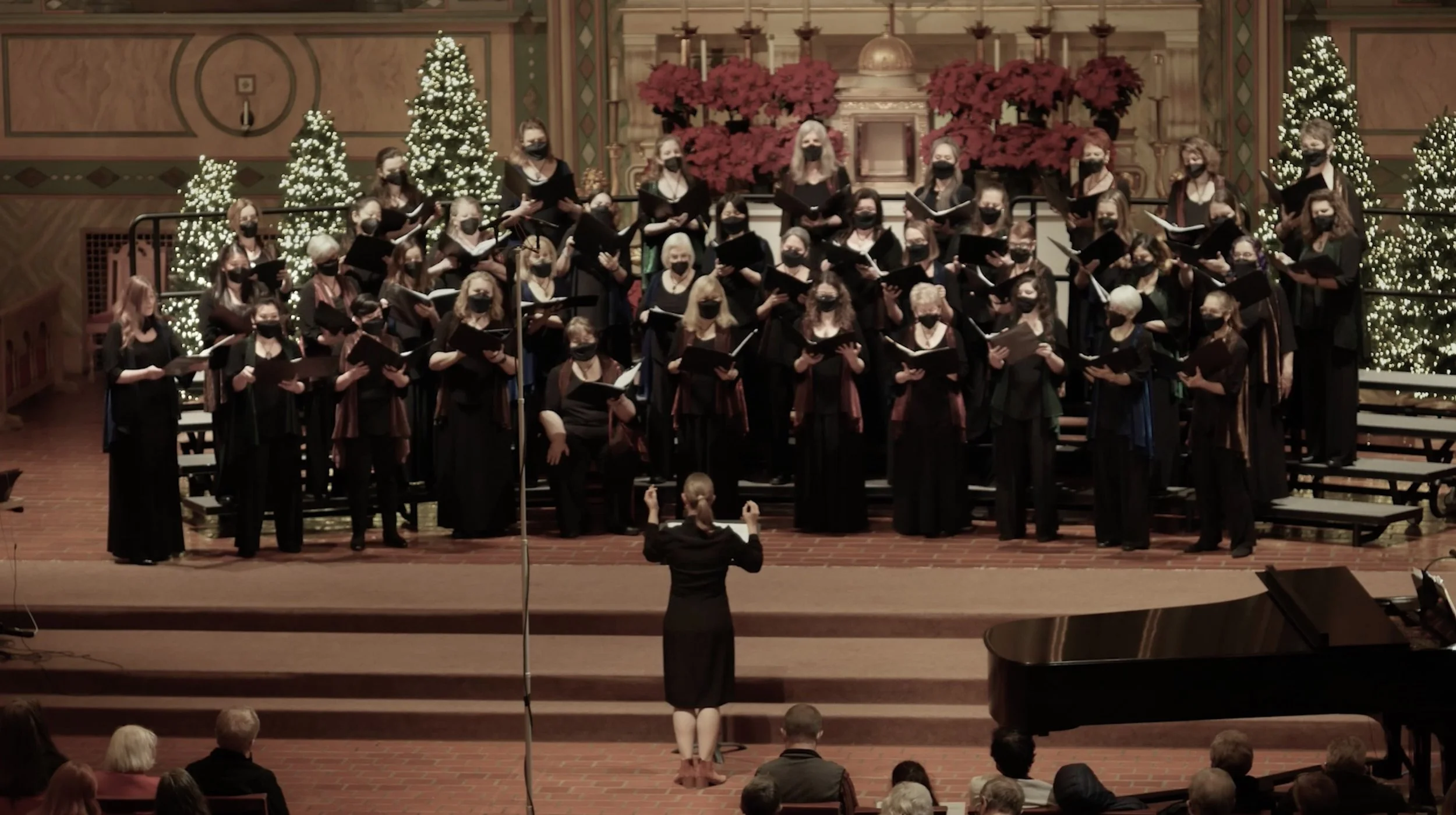PUBLIC EXCHANGE
24th Street Listening Project
in collaboration with Alexis Joseph
Interventions along 24th Street.
A multi-tiered project, the first part of which had both public and private listening events in a five-block stretch around 24th Street in San Francisco's Mission District. These listening sessions resulted in détourned site interventions in a park, church, restaurant, nail salon, AA Meeting House, and the Brava Theater.
The second part of the project made with collaborator Alexis Joseph, took this five-block intervention site as a way to look deeply at the history of the neighborhood, examining echoes in this landscape across time. These investigations culminated in tree plantings along these five blocks with Friends of the Urban Forest, sidewalk stencil marking of sounds heard in the neighborhood, and a performance/book and web-launch/event at the Brava Theater.
A series of walking tours of these five blocks introduced others to the practice of listening.
2010
tree planting, walking tours, video, musical performances, stage performances, story reading, book, band, website
images: Christine Elfman
The Alhambra Project
in collaboration with Christoph Steiger
An intervention at the Alhambra Theater/Crunch gym, San Francisco.
The Alhambra Project illuminates layered site-specific neighborhood history, exploring cultural patterning while interrogating shifting San Francisco demographics. The former Alhambra Theatre, down the street from when I live, is modeled after the Alhambra Palace in Spain, now a Crunch gym. The theater/gym is the site for interventions: multi-channel video, performative reenactments from gestures in once screened films, and light projections. Additional community activities outside the theatre: a mobile app guided neighborhood tour, children’s pattern drawing and ice cream social, wine tasting, manicures, and wallpaper pattern exhibition.
Participating artists: Etel Adnan, Binto Ayofemi, Carl Blake, Elaine Buckholtz, Pearl Merill, Omar Mismar
Participating writers: Reverend Dorsey Blake, Sister Marianne Farina CSC, Sabrina Castillo Gallusser, Emily Keeler, Barbara McBane, Denise Newman
Participating sound walk speakers: Gunnar Andeerson, Fadi Berberi, Reverend Dorsey Blake, Jeanette, Gene and Sue De Martini, Sister Marianne Farina, Gloria Frym, Mamoru Fujieda, Stephen Goldstine, David Lawrence Hemingway, Dari and Alexis Joseph, Leesa and Paul Kozel, Laura Marks, Cecile Marie, Quensella Miller, Mark Ong, Anysa Saleh, Michael Schneider, Keyvan Shovir, Doris Sloan, Zach Zaltsman
2016
video, sound, mobile app walking tour, participatory exercise, neighborhood merchant participation, spotlight, fog machine
images: Minoosh Zomorodina
see website: http://thealhambraproject.com/
California Yellow-Billed Magpie
When Jen Delos Reyes asked me to participate in her project The Disappearing Birds of North America, I knew I wanted to work with the California Yellow Billed Magpie whose habitat is shrinking due to human encroachment. Endangered animals and birds will only exist as replicas in the future—plush toys and puppets.
2023
video, felt, feathers
Gestures in Search of Missing Tenderness
In the fall of 2019, I returned to Venice, for another orthogonal intervention into the biennale, and to continue to explore what was missing.
Intervention sites: Bridge of Sighs, Church of San Nicolo del Mendicoli, Island of San Michele, Lido beach, along paths in Park of Remembrance, canal at Paludo Sant’Antonio Bridge, under Umbrella Pines in Park of Remembrance
I often collaborate with people today, but I also often collaborate with people who are dead, but inspire me.
I have admired the work of many artists who worked in Venice, from centuries ago, and also contemporary artists. From my background in film—the work of Luchino Visconti and Nicholes Roeg—also Sophie Calle’s following project, Mark Bradford’s dark pictures of crisis, and the walking work made by walk-space artists for the cross-city Berlin-Venice walks organized for the Lebanese Pavilion in 2011.
I think about how this work echoes across time and place.
I walked and intervened with gestures of breath, longing, contemplation, anger, at these seven sites around Venice.
2019
sand, ink, canal water, leaves, handkerchiefs, fire
objects are closer than they appear
Sponsored by the US Department of State’s Arts Envoy Program, I went to Moldova to work with children in state run orphanages and the public in libraries around the country.
Participants take a moment to record, by scanning, objects that are of emotional or cultural importance. Sometimes these objects are gifts, sometimes treasures, sometimes things that are handmade and often simply daily possessions. We made prints of the scans for all participants.
2011
scanner, printer
Scanning Back to Dionne Warwick: Site Excavations
This project extends the Latent Light Excavations, a project of recording, revealing, remembering and witnessing the residue of history in different sites.
I pass out maps with images/ words/ song lyrics/ historical facts of what might have been at the location of what is now the street where the IEG fair is taking place at the ZERO1 Biennial.
What was at this particular location before it became its current street? What underlying structures are part of the site: how is the sewage and water system configured, who cleans the street, what amount of wattage does it take to illuminate the street lights, these and other aspects that we usually overlook but are necessary to what makes a site function. I will also address more deeply hidden aspects of the street’s shifting occupation over time, the origin of the street’s name, the histories of San Jose and surrounds, the history of California.
These takeaway maps are the starting points for conversations. Participants are invited to walk the map or to simply take the map for later reflection.
I am interested in the mapping between public sites and private places, the topology of a more "tender cartography." I ask participants to tell me their own stories related to place and emotion, these stories can be in the form of words or images—personal, familial or biographical tales, and sentimental relation to place. These stories may include hidden histories related to places of emotional importance or public places with personal emotional overlays.
We scan and embed these narrated histories written or drawn on postcards into their locations in San Jose or around the globe, on Google maps, and begin a larger interconnected mapping of our shared relation to place, creating a spatial narrative and a “tender cartography.”
2008
paper map, scanner, postcards, website
Shanghai Listening Project
I traveled to Shanghai to listen. Once in Shanghai I asked people I met to show me their city and listen with me. We listened together at thirteen sites: in public parks, around tables in homes, in cafes and restaurants, at Fudan University, to dance performances, in a migrant school for children, and during reflexology treatments.
We used the Chinese equivalent of Blue Books to record our listening encounters—our time together was bound by the pages of the book. I collapsed all pages of notes from each listening session on top of one another to make site-listening exchange scores. I also wrote a short story about each listening encounter.
When I returned I studied with master calligrapher Zhang Huo. I was interested in the meditative aspects of calligraphy as well as learning to write sounds from these listening events in Chinese. Ultimately it was Mr. Zang, who wrote sounds, extracted from each story, on a gallery wall at the opening.
Objects, drawings, books, and videos were also presented as dilations, compressions, and extensions of these listening experiences in Shanghai.
2010
listening scores on paper, video, sound, booklets, calligraphy
Somehow this relates to love
In residence at St. Ignatius Church in the winter and spring of 2019, I made other attempts to recover the emotional heart of Bellini’s missing painting through work that activates the five senses. The motif of the Madonna — understood expansively as the relations between caretakers and their charges, with many forms and meanings — along with collaboration between women of all ages, frames the show.
Working in four alcoves and the nave of the church, I worked with many other people and organizations using video, sound, scent, touch, taste, and performance.
Participating artists and organizations: San Francisco Girls Chorus Level IV Ensemble, Valérie Sainte-Agathe, Artistic Director, conducted by Anne Hege Level IV Director, composition, Jennifer Wilsey, libretto, in collaboration with Denise Newman, bitters, Maria Del Carmen Cortéz, Long Distance Summersaulting, Judit Navratil and her daughter Luna Miyu Han, Grannies Respond/ Abuelas Responden, and La Casa de las Madres
Deep Listening® sessions: Anna Wolfe-Pauly, Gabby Fluke-Mogul
2019
photographs, protest banners, videos, wooden lettering, broadsheet, velvet curtain, speakers, scent, bitters, chorus
images: Minoosh Zomorodina
to hold, to miss, to remember
in collaboration with Sarah Bird
A site intervention at the Venice Biennale, Campo Madonna de l ‘Orto, Venice, Italy.
For three days in June 2017, I enacted, to hold to miss to remember. Giovanni Bellini’s Madonna and Child, painted in 1480, was stolen from the Madonna dell Orto church in 1993. We invited the public to join us in making attempts to find the tender gesture from the stolen painting, a tenderness that we are missing.
Bathed in a scent created for the project, I dressed as the missing Madonna, sat in a chair, and held the public in attempts to find the missing tender gesture. We marked in chalk, onto the herringbone brick of the church square, the number of attempts enacted.
Scent developed in consultation with Loreto Remsing, cloak by Tiersa Nureyev.
2017
cloak, scent, chairs
(excerpt)
(excerpt)
Truly Sisters
Installation in St. Ignatius Church in San Francisco, connecting the parish congregation and Bay Area communities to the Sisters of the Holy Cross in Sao Paulo, Brazil.
I went to visit my Aunt June Kirby in Brazil. She is a Sister of the Holy Cross. I was deeply moved by the work that she and her fellow Sisters were doing, and we did a small project together, called Stitching Wishes. When I was invited to participate in a group show of women exploring their faith backgrounds, Thresholds of Faith, I decided to work again with the Sisters, and bring the practices of these amazing women into the church.
Skype conversations were held biweekly with Sisters to discuss their varied social justice activities, including developing art programs in favelas, advocacy work in the Amazon, work with women prisoners. Between Skype sessions, a video of the Sisters’ environments played on the gallery monitor. A book of hours, which has quotes from women saints, composers, and the Sisters themselves, includes an entry for each day of the exhibition.
2014
Skype conversation, video, sound, book, prayer card
Underplots
in collaboration with Susan Gevertz
Originally a performance at Little City Gardens, an urban farm organized to look at food systems, community activation, environmental awareness, and urban land use. At the initial performance Susan and I passed out food stickers with Underplots printed on the label, and asked participants to place labels on food in markets they visited, take a photograph, and send to us.
A website named Underplots, with poems and musings on food and growing practices, accepted photographs of the stickers on food, creating an archive of vegetables and produce.
2011
printed vegetable label
Would you like to have it all?
in collaboration with Denise Newman
Long time collaborator Denise Newman and I worked with the choristers to find out what they thought about being a woman today and across the span of their lives. From their comments we wrote a libretto. The music is composed by Jennifer Wilsey, who also wrote the music for somehow this relates to love.
2022
chorus
